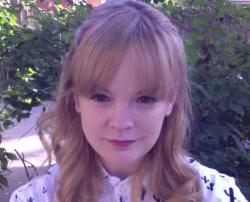
If you’re like a lot of test-takers, the ACT Reading section might seem off-putting. The passages are long, it’s easy to get answer choices wrong…so how to master it? By following these ACT Reading tips for eliminating answer choices! As you apply these ACT Reading tips to your process, you’ll find the ACT Reading test gets, if not fun, definitely more manageable. Ready? Take a look at these tips for ACT Reading!
Table of Contents
- Tips for ACT Reading: Breaking Down the Question
- ACT Reading Practice
- Putting Tips to the Test
- Using the Tips in Prep
Tips for ACT Reading: Breaking Down the Question
If you’ve ever answered multiple-choice questions before (that’s most of us), you’re probably familiar with the process of elimination: eliminate wrong answers to get to the right answer. This is a super-powerful strategy—but for the ACT, you’ll need to nuance it a little bit to get more questions right, faster!
You’re way more likely to get Reading questions wrong if you follow the traditional strategy most people use for tests: going through the reading passage, reading the question, then reading each answer choice in order and giving it equal consideration. Instead, use these ACT Reading tips to ace this action in less time!
- Understand that wrong answers on Reading questions are traps. These are meant to be convincing—slightly too extreme, slightly too narrow, one word off from the right answer, reasonable assumptions that don’t appear in the passage, material that shows up in the passage but doesn’t answer the question.
- Use keywords from the question to review relevant sections and important details from the passage. Don’t expect the right answer to jump off the page at you! As we discussed above, these wrong answers are meant to be tempting. They’re never going to be: A. yellow, B. banana, C. ten, D. Mrs. Dalloway. Instead, they’re more likely to be along the lines of: A. yellow, B. orange, C. ochre, D. red. So focus on reading the question carefully, identifying the information you need to answer it, before you return to the passage (or your passage notes–writing one or two word summaries of each paragraph can be helpful as you read the first time) to skim for that information.
- Make a prediction before you read the answer choices. It might seem like coming up with your own answer would take up more time—but it actually saves time! Looking at the answer choices cold is dangerous—and you’ll waste a lot of time engaging with them and letting them take up space in your brain. Instead of meandering through a pile of wrong answer choices in search of the right one, use your own words to state the answer first, then evaluate the answer choices.
- If an answer choice doesn’t match your prediction, immediately stop reading it and move on. Don’t let it take up your brain space! You already know it’s wrong—you don’t need it. Cross it off in your test booklet, move on.
- Avoid superlatives. One of the wrong answer types that crops up a lot? Superlatives! Say you’ve just been given a passage on the dangers of mobile technology. The author’s making an argument that they can potentially limit our freedom, our civil liberties. And the question pops up: which of the following statements is the author most likely to agree with? One of those statements says, mobile technology is the most threatening menace to society today. That’s a superlative. The most threatening is a very extreme position. We don’t know, from reading one piece of what an author has written, what that author thinks about other items. It could be that the author is even more concerned about other things related to technology, like genetically modified food, maybe. So whenever you see something that says best, worst, most, least, any kind of superlative? Unless it says directly in the passage that that is the case, assume it’s not the right answer. These also make for excellent answers to eliminate when you’re running out of time!
These tips will work on all types of questions, from main idea to inference to point of view to vocabulary. They’ll also work for all types of passages—social science/social studies, natural sciences, prose fiction (literary narrative), and humanities.
Don’t believe this simple trick of predicting the answers will work? Try out the ACT Reading strategies yourself with the mini-ACT practice test below!
![]()
ACT Reading Practice
With those ACT Reading tips in mind, let’s try two ACT Reading questions, direct from Magoosh ACT prep!
First, read the passage. Then, use the tips above to approach each question. Finally, check your answers with Magoosh’s video answers and explanations!
Click here for the passage!
After the discovery of Neptune in 1846, eager astronomers combed the Solar System for signs of another planet that might lie beyond this gas giant. They had good reason to believe one might exist: Neptune’s discovery had directly resulted from French mathematician Urbain Le Verrier’s hypothesis that perturbations in the orbit of Uranus were caused by the gravitational pull of a yet-undiscovered planet. Le Verrier predicted the position of this new planet and sent his calculations to German astronomer Johann Gottfried Galle. With these coordinates, Galle discovered Neptune the very next day—exactly where Le Verrier had predicted. But there remained some discrepancies in the gas giants’ orbits even with the discovery of the blue planet, so the hunt for yet another distant planet in the solar system forged onward.
Percival Lowell, an early twentieth century astronomer, exhibited a particular obsession with this search for a ninth planet. Lowell christened this hypothetical new planet “Planet X,” and, in his 1915 Memoir on a Trans-Neptunian Planet, concluded that Planet X must have a mass roughly seven times that of Earth—about half that of Neptune—and a mean distance from the Sun of 43 AU.* When Lowell died suddenly in 1916, his observatory, led by the efforts of his widow, persisted in the search for the elusive Planet X.
Fourteen years later, an ambitious budding astronomer from a Kansas farming family made the first major discovery in the search for Planet X. In 1929, twenty-three-year-old Clyde Tombaugh arrived at the Lowell Observatory and was given the task of systematically imaging the night sky. Tombaugh captured sections of the sky in pairs of images taken two weeks apart. He then placed the paired images into a machine called a blink comparator, a microscope that superimposes two photographic plates, “blinking” rapidly between them and creating a time-lapse illusion of the movement of any planetary body. In February 1930, after searching for almost a year and examining nearly two million stars, Tombaugh discovered a moving object on photographic plates taken in the previous month. The object lay just six degrees from one of the two locations for Planet X that Lowell had suggested, and it seemed as though, at long last, Lowell had been vindicated.
This supposed new planet was named Pluto, in part to honor Percival Lowell, as his initials make up the first two letters of the word. However, it did not take long before astronomers began debating Pluto’s status as a planet. Observations showed that Pluto was six times dimmer than Lowell had predicted. It also had a far more elliptical orbit than any other planet in the solar system. In 1978, Pluto was found to be too small for its gravity to affect the gas giants, a discovery that resulted in a search for a tenth planet, which was eventually abandoned in the early 1990s when the Voyager 2 spacecraft found that irregularities in Uranus’s orbit were actually due to a slight overestimation of Neptune’s mass.
In 1992, the discovery of numerous small, icy objects similar in size and orbit to Pluto led to a more vocal debate over whether it should remain a planet or whether Pluto and its asteroid neighbors should be given their own separate classification. In 2006, the International Astronomical Union ultimately reclassified Pluto and its friends as “dwarf planets,” leaving the Solar System, once again, with only eight planets. It is not likely that Pluto will ever be called an official planet again, either. Mike Brown, who discovered Eris, a dwarf planet larger than Pluto, in 2005, speculates that there are likely thousands of other “rocks” like Pluto orbiting in the Kuiper belt outside of Neptune.
Today, the astronomical community is largely in agreement that Planet X as it was originally conceived does not exist, but Planet X as a concept has been revived by a number of astronomers to explain other anomalies observed in the outer Solar System. In popular culture, Planet X has become a stand-in term for any undiscovered planet in the Solar System, regardless of whether or not it fits into Lowell’s original theory. Thus, real or not, Planet X remains a fixture in the astronomical universe.
*An AU (astronomical unit) is roughly the distance from the Earth to the Sun.
Question 1
The author most likely chooses to describe Tombaugh as coming “from a Kansas farming family” (line 29) in order to:
A. imply that we might be surprised someone of Tombaugh’s background discovered Pluto.
B. emphasize the significance of Pluto’s discovery by a Kansas-based observatory.
C. foreshadow the eventual demotion of Pluto from a planet to a dwarf planet.
D. indicate Tombaugh’s close relationship with Lowell’s family.
Work through the above ACT Reading tips on your own to answer the question, or click below for help working through the question!
How to answer Question 1
First, take a close look at the question, looking for keywords/clues. Here, the question gives those keywords to you with a line reference, so read the original sentence: “Fourteen years later, an ambitious budding astronomer from a Kansas farming family made the first major discovery in the search for Planet X.”
Now, don’t read the answer choices just yet! Instead, say in your own words way it’s important that the reader know Tombaugh came from a farming family in Kansas. It’s not because this had anything to do with astronomy—instead, it’s for the opposite reason, because this background seems so different from the stereotypical astronomer’s.
Now that you have a prediction, take a look at the answer choices.
A seems like a good fit, but make sure you can eliminate the others before you pick it for good.
B repeats “Kansas,” but this isn’t what the passage is saying about Kansas—get rid of it!
C is totally irrelevant to what you read in line 29, so cut it out as well.
D brings in Lowell’s family, which isn’t true of what line 29 says—get rid of it, too.
Answer A it is!
Click here to see the answer and full video explanation for Question 1!
Question 2
The passage indicates that the most important difference between Planet X as it was conceived of by Lowell and Planet X as it is conceived of today is that:
A. Planet X according to Lowell was Pluto and Planet X as it is used today is Eris.
B. Planet X according to Lowell had a significant effect on Neptune’s orbit and Planet X as it is used today does not.
C. Planet X according to Lowell was a hypothetical entity and Planet X as it is used today refers to a concrete planetary body.
D. Planet X according to Lowell had a specific location and specific characteristics and Planet X as it is used today is a substitute term for any undiscovered planet in the outer Solar System.
Work through the above ACT Reading tips on your own to answer the question, or click below for help working through the question!
How to answer Question 2
Before anything else, make sure you understand the somewhat convoluted question here. For complicated questions, don’t be afraid to rephrase them! Break it down to its keywords: “most important difference,” “Planet X,” “conceived of by Lowell” and “Planet as as it is conceived of today.” Then, reword the question in your own words: what’s the main thing that’s different about how we see Planet X now versus how Lowell saw it?
Go back to the passage to find this information, using the keywords (and synonyms) from above. In this case, you can find information about Lowell’s belief described as being that there was a specific, identifiable planet in Neptune’s orbit that needed to be identified, at the beginning of the passage. You can also find information about Planet X today in the final paragraph: it has a wider definition.
Summing this up, you could say that Lowell had really specific ideas about Planet X, but our understanding is much broader today.
Now, evaluate the answer choices!
A. Pluto didn’t come along in Lowell’s time—eliminate it!
B. Lowell had beliefs about Planet X’s location and mass, but the passage doesn’t say anything about his beliefs about orbit—eliminate it!
C. The second paragraph specifically ays the mass and location Lowell thought the planet had—this was no hypothetical for him. Eliminate it!
D. A great match for the prediction above. Keep it!
Click here to see the answer and full video explanation for Question 2!
![]()
Putting Tips to the Test
Now that you’ve seen how to eliminate cleverly on this section with these ACT Reading tips, put your skills to practice by trying your hand at a new passage and mini-Reading set independently! Answers and explanations follow.
Click here for the passage!
Natural Science—“The Wonders of Blood”
Human cultures have long recognized that blood is essential to life. The Bible mentions blood more than 400 times, William Shakespeare close to 700. Yet to scientists who study blood, even the most extravagant blood lore pales in comparison to the biochemical, evolutionary and engineering marvels of the genuine article.
Our blood is the foundation of our very existence as multicellular animals, said Andrew Schafer, president of the American Society of Hematology. Blood is the one tissue that comes into contact with every other tissue of the body, and it is through blood that our disparate parts communicate, through blood that our organs cooperate. Without a circulatory system, there would be no internal civilization, no means of ensuring orderly devotion to the common cause that is us.
Our eight pints of blood circulate through the powerhouse lungs and heart duet maybe 60 times an hour, absorbing recently inhaled oxygen from the honeycombed fabric of the lungs and proceeding into the thickly muscled heart, which then shoots the enriched fluid outward. “It’s an enormous communications network,” Dr. Schafer said—the original cellphone system, if you will, 100 trillion users strong.
Click here for the questions!
1.
The main purpose of the author in writing the passage is most likely to:
A. compare and contrast the functions of the heart and lungs in the circulation of blood
B. illustrate the rich history of blood-themed literature
C. introduce the importance of blood circulation as a biological communication system
D. prove the need for further funding for the American Society of Hematology’s research
2.
As it is used in the passage, the term “article” most nearly means:
A. commodity
B. substance
C. column
D. section
3.
In the context of the passage, what is the purpose of lines 1-2?
A. Explain the significance of blood in literature
B. Reveal the change in attitude toward blood over history
C. Describe people who acknowledged the importance of blood to the human body
D. Illustrate how pervasive the topic of blood is in human culture
4.
Which of the following best summarizes the attitude of the author towards blood circulation in this passage?
A. Scientific detachment
B. Effusive amazement
C. Calculated expectation
D. Tepid indifference
Click here for answers and explanations!
1.
The author mentions the involvement of the heart and lungs in the circulation of blood, but does not compare and contrast their functions (Option A). The author uses the Bible and Shakespeare only to introduce her topic with an illustration of its widespread importance, but does not focus on literature throughout (Option B). Without mentioning anything about the status of the American Society of Hematology’s research funding, Option D cannot be the correct answer. Option C is the best choice, because the passage does explore blood circulation as a means of communication within the body.
2.
In a long document, particularly legal documents, an article can mean a section or paragraph (Option D), and in a newspaper or magazine, a column can also be called an article (Option C). An article as a commodity (Option A) can refer to “an article of clothing” or “articles in a lost and found bin,” but substance (Option B) best fits the article in the passage.
3.
Option D is the best choice because the author mentions the Bible and Shakespeare as a specific example of her opening sentence: the Bible and Shakespeare’s plays are important reference points in human culture. The purpose is not just the inclusion of blood in those works (Option A), nor is the purpose to chart changes in the time that passed between those cultural works (Option B). Option C is a tempting choice, because references in the Bible and Shakespearean works might acknowledge the importance of blood, but Option C is incorrect because the author doesn’t include those allusions in order to describe the Bible or Shakespeare.
4.
While the author uses a scientific source in her essay, her use of humor and even connection to the reader (using words like “our”) show that the author is neither detached (Option A), nor indifferent (Option D). The author does not merely have an expectation about the circulation of blood (Option C), but is actually enthusiastic about the importance of blood. The author’s use of humor and references to items the reader will relate to (cellphones, literature) demonstrates effusiveness (enthusiasm), while the author’s description of the lungs and heart as a “powerhouse duet” conveys amazement, making Option B the best choice.
Using the Tips in Prep
While the above techniques are incredibly important to use both in practice and test day, the right kind of practice is also crucial to setting you up for success. Here are our top tips for ACT Reading prep!
- Read all of the answer explanations as you study. The more you do this, the more you’ll get familiar with the kinds of wrong answer choices you’ll see on test day—and the less tempting they’ll be!
- Do at least 10 ACT Reading practice tests. Full-length practice tests are available in ACT practice books at local bookstores, at your local library, and are even downloadable online. Find a quiet place where you can take the practice ACT, and clear off the table or desk. Try and eliminate any distractions and do the best you can to mimic your test-day environment. Keep a clock or timer in front of you so you can periodically check and see how you are doing. You may want to set the timer to go off every 9-10 minutes. Don’t rush, but make sure you can move confidently from one passage to the next and answer ALL questions in the time allotted.
- Get used to mixing up the passages. You will always see four passages and you must always answer all 40 questions (even if you just guess—the ACT does not penalize you for wrong answers!). But that doesn’t mean you have to approach the passages in the order in which they are presented on the test. As you practice, you will start to realize which passages are easier and which are more challenging for you. For example, if Prose Fiction is your strong point but Natural Science passages make you nervous, it may make sense for you to do the Prose Fiction passage first and save the Natural Science passage for last. Just make sure you’re bubbling in the right question number on your answer sheet…
- Time yourself as you practice to get the pacing right. If you are spending more than three minutes reading and marking ACT reading passages, you are risking not being able to finish all of the questions on test day. As you become more and more confident with your accuracy, try to get as precise as possible with the timing of your note taking.





